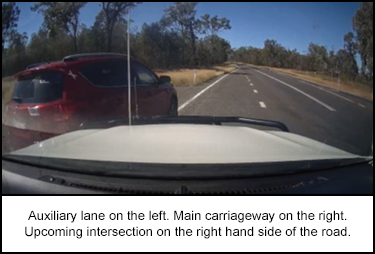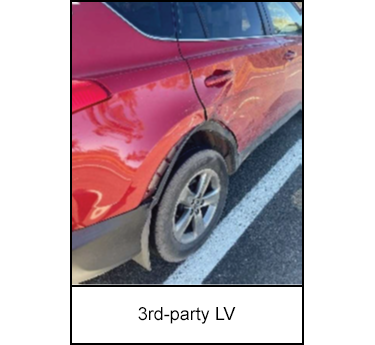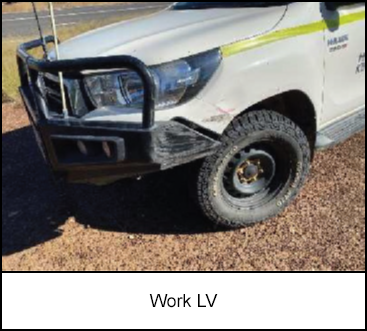-
What happened?
The driver of a light vehicle (LV) travelling on a highway (speed limit 100 km/h (62 mph)) had slowed to about 30 km/h (19 mph) and was preparing to make a right-hand turn at an upcoming intersection.
Prior to making the turn, the driver changed course to pull over to the left side of the road, off the main carriageway, across an auxiliary lane.
This resulted in a glancing collision with a 3rd-party LV which was passing on the left-hand side.
The 3rd-party LV partially left the road and impacted two roadside markers before coming to rest in the middle of the road.
There were no injuries. There was minor damage to both vehicles.

-
Why did it happen?
There was a potential blind spot due to road topography, mirror positioning or speed of the 3rd-party LV.
The route travelled and destination (work site) was new to the driver.

-
What did they learn?
Ensure Journey management processes involve work planning to minimise Vehicle kilometres travelled (VKT).
Take the time to implement effective journey planning, particularly for new or unfamiliar locations.
Encourage use of hands free in-vehicle navigation tools.
Deliver defensive driving awareness sessions.

-
Ask yourself or your crew
How do you typically plan your route before you depart? Do you use hands free in-vehicle navigation tools?
What training or guidance have you received on applying defensive driving principles?
Can you describe your approach to creating and using a Journey management plan? How do you ensure you follow your Journey management plan once it's in place?

Add to homescreen
Content name
Select existing category:
Content name
New collection
Edit collection
What happened?
The driver of a light vehicle (LV) travelling on a highway (speed limit 100 km/h (62 mph)) had slowed to about 30 km/h (19 mph) and was preparing to make a right-hand turn at an upcoming intersection.
Prior to making the turn, the driver changed course to pull over to the left side of the road, off the main carriageway, across an auxiliary lane.
This resulted in a glancing collision with a 3rd-party LV which was passing on the left-hand side.
The 3rd-party LV partially left the road and impacted two roadside markers before coming to rest in the middle of the road.
There were no injuries. There was minor damage to both vehicles.

Why did it happen?
There was a potential blind spot due to road topography, mirror positioning or speed of the 3rd-party LV.
The route travelled and destination (work site) was new to the driver.

What did they learn?
Ensure Journey management processes involve work planning to minimise Vehicle kilometres travelled (VKT).
Take the time to implement effective journey planning, particularly for new or unfamiliar locations.
Encourage use of hands free in-vehicle navigation tools.
Deliver defensive driving awareness sessions.

Ask yourself or your crew
How do you typically plan your route before you depart? Do you use hands free in-vehicle navigation tools?
What training or guidance have you received on applying defensive driving principles?
Can you describe your approach to creating and using a Journey management plan? How do you ensure you follow your Journey management plan once it's in place?
A light vehicle collided with another while preparing to turn on a highway due to route unfamiliarity and blind spots. No injuries occurred.
Original material courtesy of Safer Together (Australia)
To access the PDF and PowerPoint versions, please visit https://www.safertogether.com.au/resources/sharing-library/driving-collision-mar-2022











